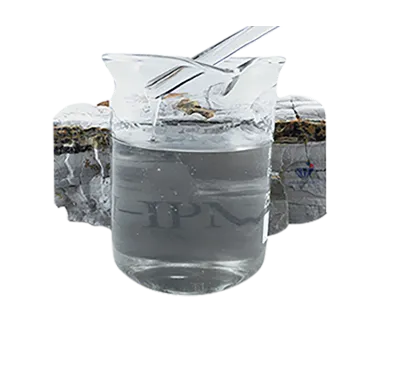
Dec . 10, 2024 14:29 Back to list
hydroxypropyl methylcellulose use
The Versatile Uses of Hydroxypropyl Methylcellulose
Hydroxypropyl methylcellulose (HPMC) is a cellulose derivative that has garnered significant attention across various industries due to its unique properties and versatility. As a non-ionic, water-soluble polymer, HPMC is primarily derived from cellulose, an abundant natural polymer found in plants. Its applications span a broad range of fields, including pharmaceuticals, food, construction, and personal care products, making it a vital ingredient in today's manufacturing processes.
Pharmaceutical Applications
One of the most important uses of HPMC is in the pharmaceutical industry. It serves multiple roles, notably as a binder, film-forming agent, and controlled-release matrix. As a binder, HPMC facilitates the adhesion of powder particles in tablet formulations, ensuring that the tablets maintain their structural integrity during manufacturing and storage. Moreover, HPMC's film-forming capabilities enhance the stability and taste-masking of pharmaceuticals, improving patient compliance.
In controlled-release formulations, HPMC is pivotal in regulating the release rate of active ingredients. It forms a gel-like matrix when in contact with water, allowing for a sustained release of the drug over an extended period. This property is particularly beneficial for chronic conditions, where maintaining a steady level of medication in the bloodstream is essential. The use of HPMC in drug delivery systems exemplifies how it can improve therapeutic outcomes and patient convenience.
Food Industry Contributions
The food industry also recognizes the significant advantages of HPMC. It acts as a food thickener, stabilizer, and emulsifier, playing a crucial role in modifying food textures and improving mouthfeel. HPMC is frequently used in gluten-free baked goods, where it helps improve the dough's elasticity and structure. This is particularly important, as gluten plays a vital role in traditional baking, and HPMC serves as a suitable substitute for maintaining product quality.
Furthermore, HPMC is employed in low-fat and low-calorie food formulations. As a fat replacer, it mimics the creamy texture and mouthfeel of fats, allowing manufacturers to create healthier products without compromising taste. The versatility of HPMC in food applications demonstrates its role in meeting the growing consumer demand for healthier, innovative food products.
hydroxypropyl methylcellulose use

Construction and Building Materials
In the construction sector, HPMC is utilized as an essential additive in cement-based products such as tile adhesives, self-leveling mortars, and plasters. Its water-retention properties enable these materials to remain workable for extended periods, allowing for better application and adhesion to surfaces. The inclusion of HPMC can also enhance the mechanical strength and durability of construction materials, making it a favored choice among builders and contractors.
HPMC's ability to improve the workability of construction materials is particularly beneficial in hot and dry climates, where water evaporation can compromise the performance of cement mixtures. By retaining moisture, HPMC ensures that the hydration process proceeds optimally, leading to stronger and more durable constructions.
Personal Care Products
In personal care, HPMC finds diverse applications in cosmetics, skincare, and hair care products. It serves as a thickening agent and stabilizer in lotions, creams, and gels, enhancing their texture and ensuring even distribution upon application. Additionally, its film-forming properties allow for the creation of long-lasting products, such as hair styling gels and sunscreens.
Moreover, HPMC is increasingly incorporated into natural and eco-friendly products due to its biodegradable nature. Consumers are becoming more conscious of the ingredients in their personal care products, leading manufacturers to seek sustainable alternatives. HPMC's safety profile and versatility make it an attractive option for formulating gentle yet effective personal care items.
Conclusion
Hydroxypropyl methylcellulose stands out as a multi-functional ingredient across various industries. Its unique properties—such as solubility, film-forming abilities, and stabilizing characteristics—make it indispensable in pharmaceuticals, food, construction, and personal care products. As industries continue to seek innovative solutions that cater to consumer demands for quality and sustainability, the importance of HPMC is likely to grow, solidifying its place in modern manufacturing and application processes.
-
Versatile Hpmc Uses in Different Industries
NewsJun.19,2025
-
Redispersible Powder's Role in Enhancing Durability of Construction Products
NewsJun.19,2025
-
Hydroxyethyl Cellulose Applications Driving Green Industrial Processes
NewsJun.19,2025
-
Exploring Different Redispersible Polymer Powder
NewsJun.19,2025
-
Choosing the Right Mortar Bonding Agent
NewsJun.19,2025
-
Applications and Significance of China Hpmc in Modern Industries
NewsJun.19,2025







